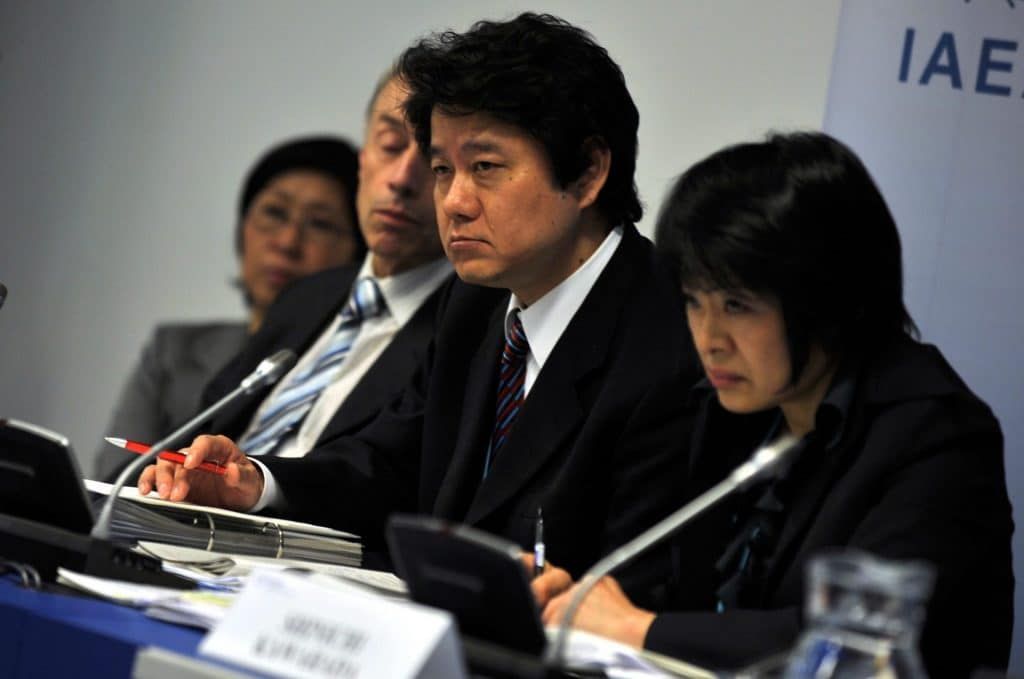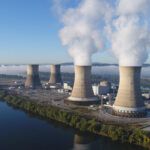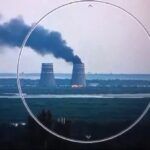Improving the communication of risks before, during, and after a nuclear accident
By Maxime Polleri, Cameron Tracy, Elizaveta Likhacheva, Evgenia Stepnykh | August 31, 2020
 Koichiro Nakamura, Deputy Director General of the Japanese Nuclear and Industrial Safety Agency, gives a presentation at an IAEA event in April 2011. Credit: IAEA Image Bank.
Koichiro Nakamura, Deputy Director General of the Japanese Nuclear and Industrial Safety Agency, gives a presentation at an IAEA event in April 2011. Credit: IAEA Image Bank.
Three Mile Island, Chernobyl, and Fukushima were once obscure names. Now, because of their associations with nuclear accidents, they have become an indelible part of history. The health effects caused by these three accidents continue to be debated among analysts, governments, and the news media, fueling unresolved controversies around the safety of nuclear power and the risks of radiation harm. In such a context, what can governments do to provide a more understandable and consistent assessment for the public?
Education. First, proper education about radiation and its health effects is crucial. So far, these topics remain the domain of an exceedingly small community of experts and specialized professionals, such as nuclear industry workers or radiologists. The general public, on the other hand, often lacks important knowledge and access to information regarding radiation health effects. Even in communities close to nuclear power plants, public and educational infrastructure sometimes remain insufficient.
For instance, before the Fukushima nuclear disaster, many citizens had no knowledge of basic radiological protection. Jargon such as “Sievert,” “becquerel,” or “gamma-ray” were akin to foreign words. When the Japanese state first sought to execute its risk communication strategy, bringing in experts to dole out information about health risks, citizens expressed confusion. They were often unable to make sense of radiation risks because the experts gave complex, quantitative explanations couched in unfamiliar, interchangeable units of radioactivity of which they had never heard. This knowledge gap notably contributed to a sense of helplessness when the disaster struck.
To rectify this shortcoming, governments must proactively provide local populations with insight into the specific risks they would face in a nuclear accident scenario. Research shows that public involvement and the accommodation of local interests and concerns in risk communication reduces public unease and promotes more informed, effective responses.
Preparedness. Second, governments should provide practical training in disaster responses, such as evacuation drills, to populations living near nuclear power plants. Because Japanese regulators succumbed to a myth of nuclear safety—which postulated that an accident on the scale of Fukushima was impossible—the residents in and around Fukushima lacked such practical knowledge.
This preparedness training should not be limited to the nearby population, however. It should also include the experts who handle official responses. In the aftermath of Fukushima, many Japanese nuclear officials were trained in economics, but lacked the experience or knowledge in emergency response. A comprehensive, independent investigation of the accident demonstrated that Japanese agencies failed to perform their expected functions because of an inadequate state of preparation. For industries like nuclear energy that are vulnerable to unpredictable, high consequence accidents, preventative measures must always be accompanied by extensive disaster preparedness.
Conveying the dangers. Third, governments need to level with the public about the specific dangers posed by an accident. Post-disaster panic is often associated with the perception that some sort of information is being withheld from the public, a fear commonly associated with nuclear facilities. For instance, in the aftermath of Fukushima,
data about radioactive contamination was provided only sporadically via scientists who were cherry-picked by the state to send reassuring messages to citizens. Consequently, institutional experts were met with skepticism and labelled as goyō gakusha, meaning “lapdog” or “government-patronized scholar.” This resulted in a legacy of mistrust around official statements on radiation, leading to the creation of citizen science networks wherein members of the affected communities independently tracked radioactive contamination in their food and environment.
To reduce fear and uncertainty, official communication should incorporate some form of public participation to promote collaboration between affected citizens and decision makers. Too often, communication takes the form of a unidirectional discussion, where experts dole out information to members of the public who are perceived to suffer from a knowledge deficit. This hierarchical relationship has proven unsuccessful, as demonstrated by the rise of citizen science in Japan. On the other hand, collaborative approaches to environmental management that involve a broad range of stakeholders commonly yield more trusted, durable solutions.
Moreover, to communicate disaster and response information in a manner understandable to the public, experts and officials must understand the numerous and sometimes contradictory experiences of affected individuals. Indeed, cultural, gendered, economic, or occupational factors influence how different segments of the population experience and respond to radioactive risks. A better understanding of these factors requires collaboration across social sciences, physical sciences, and affected populations to ensure the efficacy of disaster response measures for specific communities.
A more holistic view of the risks. Fourth, governments and regulators should incorporate all of the health consequences of a nuclear disaster, whether physical or social in origin, into their risk assessments. Exposure to radiation can deleteriously impact public health, increasing the rates at which those exposed are afflicted by diseases such as cancer. Alongside these direct health effects of radiation, its psychological impacts can also be immense. Public attitudes toward radioactive contamination are sometimes dominated by imagery of sickness, danger, and death. Psychological stress associated with exposure has been shown to increase rates of depression, anxiety, suicide, and related mental health disorders. Thus, even absent a significant effect on cancer rates, for example, nuclear accidents and subsequent radiation exposure remain a major threat to public health.
A determination of the holistic public health risk associated with an accident and communication of that risk are therefore critical to the effective management of an accident and mitigation of its effects. Rather than depicting psychological stresses as “irrational replies” or “radiophobia” from a public that supposedly suffers from a knowledge deficit, the social and psychological effects of exposure must be fully incorporated into accident response activities via active community engagement both before and after an accident.
Finally, as opposed to the effects of high-dose-rate and high-dose exposures, uncertainty remains as to the health effects of long-term, low-level exposure to radiation. For example, experts are still divided about whether an exceedingly low radiation dose is harmless or whether it carries some risk. In that regard, social scientists have examined how the debates around low-dose exposure are intertwined within specific sociocultural logics, economic considerations, historical contingencies, and political positions—with the result of both overplaying and downplaying certain aspects of radiation dangers.
An ideal form of communication ought to be open and transparent about the extent to which these social aspects are factored within low-dose debates and recovery policies. Good communication should provide to the public a more comprehensive, intelligible, and consistent assessment of risks within particular contexts, rather than branding science as apolitical.
Together, we make the world safer.
The Bulletin elevates expert voices above the noise. But as an independent nonprofit organization, our operations depend on the support of readers like you. Help us continue to deliver quality journalism that holds leaders accountable. Your support of our work at any level is important. In return, we promise our coverage will be understandable, influential, vigilant, solution-oriented, and fair-minded. Together we can make a difference.
Keywords: Chernobyl, Fukushima, Three Mile Island, nuclear accidents, nuclear energy
Topics: Nuclear Energy, Voices of Tomorrow


















